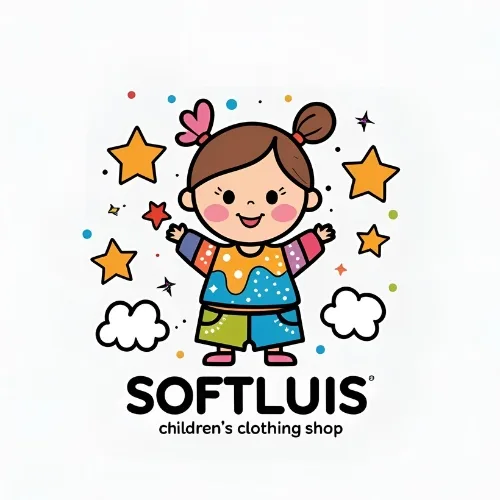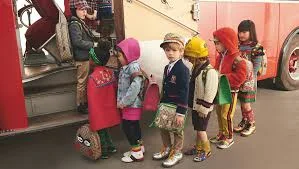News
The Premium Playground: Analyzing the Rise of Luxury Children’s Fashion Brands
The Affluent Nursery: A Socio-Economic and Psychological Analysis of the Luxury Children’s Fashion Market
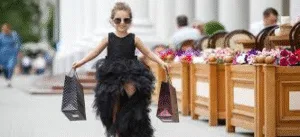
The global children’s apparel market has decisively transitioned from a purely utilitarian sector focused on basic coverage and function into a sophisticated and highly lucrative arena for high-end consumption. What was once the exclusive domain of specialist small businesses is now a key strategic growth pillar for the world’s most prestigious luxury conglomerates, with heritage houses like Dior, Gucci, and Fendi dedicating considerable resources to their children’s lines. The luxury children’s fashion segment—or high-end kidswear—is no longer a peripheral sideline but a significant global market valued in the billions of dollars and expanding rapidly.
This comprehensive analysis delves into the multifaceted forces driving this market’s exponential growth. It investigates the complex interplay of socio-economic factors, brand strategies, and—most critically—the profound psychological and emotional motivations that compel affluent parents to bypass fast-fashion and high-street alternatives, choosing instead to invest substantial sums in premium, designer garments for children who will rapidly outgrow them. The fundamental question addressed is why modern parents are increasingly willing to treat their child’s wardrobe not as an expense, but as a calculated investment and a medium for social expression.
The Market Transformation: Economic and Digital Catalysts
The burgeoning success of the luxury kidswear market is rooted in a robust combination of favorable global economic conditions and revolutionary shifts in consumer behavior driven by technology.
Global Affluence and Demographic Shifts
The most critical factor is the global rise in disposable income, particularly among high-net-worth (HNW) and ultra-high-net-worth (UHNW) households across established markets in North America and Europe, and rapidly expanding regions like Asia-Pacific. As wealth accumulates, parental spending habits evolve, placing the children’s sector firmly into the discretionary spending category.
The market has also benefited from the phenomenon of later-life parenting and smaller family sizes. Parents who delay having children often have more established careers and greater financial stability. When they do have children, they frequently practice ‘per capita investment,’ allocating a higher share of their income to a single child or fewer children, ensuring that those children have access to the “best”—a category that increasingly includes luxury fashion. This dynamic has fundamentally redefined the perceived value of children’s clothing from a commodity to an aspirational product.
The Digitalization of Aspiration and the Mini-Me Phenomenon
The proliferation of social media platforms is arguably the most powerful modern catalyst. Platforms like Instagram and TikTok have democratized the visibility of wealth, turning the children of celebrities, influencers, and affluent families into miniature style icons—or “kidfluencers.”
- Visual Status Signaling: The child’s outfit becomes a highly visible component of the curated family brand presented online. Purchasing designer clothing provides parents with instant, visual shorthand for their success and lifestyle, facilitating status signaling within their virtual and real-world social circles.
- The “Mini-Me” Trend: This trend, where children’s outfits directly mirror or are scaled-down versions of adult luxury collections, has driven tremendous sales. It satisfies the parent’s desire for visual cohesion and emotional connection with their child, effectively extending the adult’s style sensibility and brand loyalty to the next generation. It transforms the act of dressing a child into a fashion statement and a joint aesthetic project.
- E-commerce Accessibility: The rise of specialized luxury children’s e-tailers (alongside the digital expansion of the luxury houses themselves) has made high-end global brands universally accessible. This convenience caters perfectly to the time-poor, affluent consumer, allowing them to browse and purchase exclusive, often limited-edition, items from anywhere in the world.
The Core Parental Justifications: Quality, Safety, and Value
While social drivers are powerful, affluent parents invariably rationalise the high expenditure on a foundation of tangible, practical benefits that mass-market products cannot convincingly offer.
The Superiority of Material and Craftsmanship
The primary practical justification for investing in luxury kidswear is the assurance of superior quality. Designer brands maintain control over their supply chains and typically use premium, certified materials that prioritize a child’s delicate skin and comfort.
- Health and Safety: For infants and toddlers, where skin sensitivity is paramount, parents are willing to pay a premium for organic materials, such as GOTS-certified organic cotton, cashmere, and linen, processed with non-toxic, hypoallergenic dyes. The cost is viewed as an investment in the child’s health and well-being, an assurance against the synthetic materials and harsh chemicals often found in cheaper apparel.
- Construction and Durability: Luxury garments are constructed with meticulous attention to detail: reinforced seams, durable fastenings, and superior tailoring. This level of craftsmanship ensures that the clothing can withstand the rigours of active childhood play, repeated washing, and general wear-and-tear better than fast-fashion alternatives. This is where the ‘investment’ mentality begins to take hold.
The ‘Investment’ Mentality and Value Proposition
The high upfront cost is often re-evaluated by discerning parents through a ‘cost-per-wear’ calculation that includes future resale value.
- Hand-Me-Downs and Heirloom Potential: Due to their exceptional durability and timeless, classic design, luxury pieces are explicitly bought with the intention of being passed down to younger siblings, cousins, or friends. This transforms the item into a treasured hand-me-down, maximizing its practical lifespan and effectively reducing the net cost per child. Some special occasion pieces, like christening gowns or designer coats, are even conceived as heirlooms, preserved for future generations, thus acquiring sentimental value far exceeding their monetary price.
- High Resale Value: The flourishing luxury resale market provides a financial hedge against the initial high price. Designer children’s clothing retains a significantly higher percentage of its original value than standard clothing. Specialized resale platforms facilitate the easy sale of outgrown, high-quality garments, allowing parents to recoup a substantial portion of their investment and fund their next purchases—a powerful economic and environmental argument.
The Psychology of Status and Emotional Reciprocity
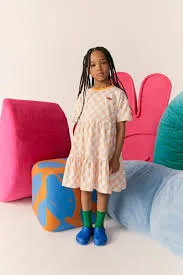
Beyond the practical, the true engine of the luxury children’s market lies in the deep-seated psychological needs of the parents.
Status Signaling and Social Positioning
The most undeniable, yet often unstated, driver is the role of luxury as a social marker.
- Affirmation of Success: Dressing a child in an exclusive, recognizable luxury brand is a powerful, non-verbal affirmation of the parent’s socioeconomic status and success. It is a way of ensuring that the entire family unit, including the youngest members, presents an image of wealth, sophistication, and good taste to their social peers and the wider world.
- Aspirational Positioning: For upwardly mobile parents, the purchase is an act of aspirational positioning. By outfitting their child in elite brands, they are signaling their family’s readiness to belong to a higher social stratum. The child’s wardrobe is leveraged to facilitate social integration and networking opportunities within affluent circles.
Emotional Alleviation and The ‘Preciousness’ Effect
The emotional dimension is equally critical, especially for modern, busy parents.
- Alleviating Parental Guilt: For high-achieving parents who spend long hours away from home, the act of purchasing the “best” available item—defined by its luxury status—is often a subconscious attempt to mitigate parental guilt. The high financial cost serves as a tangible sacrifice, symbolically converting constrained time into a visible, material demonstration of love and commitment to their child’s well-being and image.
- The Child as a Treasure: The luxury garment reflects the parent’s emotional perception of the child’s unique and precious value. Only an item crafted with the highest standards of exclusivity and care is deemed worthy of the ‘family treasure.’ This psychological framing transforms the clothing from a simple consumer good into a symbolic vessel of parental devotion.
Brand Strategy and Early Consumer Socialization
Luxury houses are not passive recipients of this market trend; they actively cultivate demand through sophisticated marketing and distribution strategies that focus on both the purchasing parent and the future consuming child.
Leveraging Heritage and Exclusivity
Established luxury brands capitalize on their adult-market brand heritage to instill trust and justify high price points in the children’s segment.
- Storytelling and Provenance: Brands like Baby Dior (a pioneer in the market since 1967) sell more than clothes; they sell a legacy of French haute couture and design excellence. This established narrative provides a powerful emotional and quality assurance that resonates with affluent, educated consumers.
- Controlled Scarcity: Luxury labels generate excitement and drive impulse purchases by implementing limited-edition capsule collections or offering exclusive, customizable features like monogramming or bespoke detailing. This strategy creates a sense of scarcity and urgency, compelling parents to buy immediately to secure a unique piece for their child.
The Development of the Future Consumer
The purchase of luxury kidswear is fundamentally an act of consumer socialization. By exposing children to high-end brands from an early age, parents are proactively shaping their future consumer preferences and long-term brand loyalties.
- Normalizing Luxury: Children raised wearing these brands are implicitly taught to associate them with the highest standards of quality, comfort, and style. This exposure normalizes luxury, making the transition to adult luxury consumption seamless and ensuring a highly loyal customer base for the parent brand when the child comes of age.
- Acknowledging Child Influence: As children move into the ‘tween’ and ‘teen’ demographic, their autonomy and influence over purchasing decisions grow significantly. Luxury brands targeting this older age group must balance parental aesthetic desires with the child’s demand for trendy, age-appropriate, and peer-approved styles. The purchase then becomes a subtle negotiation, acknowledging the child’s increasing power as an independent consumer influencer within the family unit.
The Circular Economy and The Future Imperative
The future growth of the luxury children’s wear market is increasingly dependent on the segment’s ability to align with the global movement toward sustainability and ethical consumption.
The Sustainability Justification
Affluent consumers, particularly younger millennials and Gen Z parents, are the most environmentally conscious demographic. They demand transparency and responsibility from the brands they support. The high price of luxury is, therefore, increasingly justified by:
- Ethical Production: Explicit commitments to ethical sourcing, fair labor practices, and reduced environmental footprints. Parents are willing to pay a premium for evidence of organic farming and non-exploitative supply chains.
- Longevity and Waste Reduction: The durable, long-lasting nature of high-end garments is presented as a direct counterpoint to the environmental damage caused by fast fashion’s disposable model. The long product life cycle is a tangible form of waste reduction.
Investment in Material Innovation
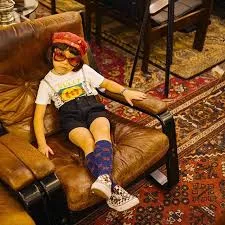
To maintain their competitive edge and justify the cost, luxury brands are pioneering the use of advanced, sustainable materials. The focus is shifting from simple cotton to:
- Performance-Enhancing Fabrics: Textiles that offer advanced features like natural UV protection, superior moisture-wicking, and enhanced resistance to staining. These features add genuine functional value that transcends mere aesthetics.
- Closed-Loop Systems: Brands are exploring and investing in circular fashion models, including offering in-house repair services or partnering with specialist platforms to facilitate the resale or upcycling of their products. This not only reinforces their sustainability credentials but also enhances the product’s investment appeal by ensuring its enduring utility and value
Cultural Impact and The Branding of Childhood
The proliferation of luxury children’s wear reflects deeper societal shifts in how childhood is perceived, valued, and branded. The garments are not just clothes; they are artifacts of a culturally curated lifestyle.
The Rise of ‘Conspicuous Consumption’ in Childhood
The phenomenon of affluent parents investing heavily in luxury goods for their children falls under the umbrella of “conspicuous consumption,” first theorized by Thorstein Veblen. However, in this context, it takes on a specific form: “Conspicuous Parenthood.”
- Vicarious Display: Since the child is not the purchaser, the act of consumption is vicarious. The luxury item serves to broadcast the parents’ wealth, taste, and dedication. Unlike an adult luxury purchase, which is solely about the self, the child’s designer attire is a selfless, yet equally powerful, form of material display. It suggests, “I am a successful parent who can provide the very best, and my child is a testament to my success.”
- A Shield Against Judgment: In hyper-competitive, status-conscious communities, especially in major urban centers, there is a palpable pressure to conform to high standards of spending. For some parents, buying designer children’s wear is less about their personal desire and more about avoiding social critique or perceived failure within their peer group. It acts as a shield, affirming their adherence to the unwritten rules of high-status living.
- The Aestheticization of Childhood: Modern childhood is increasingly aestheticized—every moment, from the first steps to the school photo, is documented and often shared online. Luxury brands provide the perfect visual grammar for this documentation. Their sophisticated designs, high-quality finishes, and instantly recognizable logos ensure that the documented memories possess a high aesthetic quality, suitable for permanence in photo albums and digital feeds.
The Strategic Targeting of the Parental Gatekeeper
Luxury brands employ nuanced marketing strategies specifically designed to persuade the parental gatekeeper—the person with the purchasing power—by appealing to their rational and emotional needs simultaneously.
- Focus on ‘Investment vs. Expense’: Advertising campaigns rarely focus on fleeting trends. Instead, they center on timelessness, craftsmanship, and longevity. Imagery often showcases children enjoying gentle, classic activities (e.g., sailing, equestrian sports) in pieces that evoke nostalgia and tradition, subtly implying that the garment is not a seasonal purchase but a classic staple, much like adult investment pieces.
- Exclusive Experiential Retail: The physical retail experience for luxury children’s wear is designed to mirror the adult experience. Boutiques are often separate from the main adult floor but retain the same level of opulent design, private consultation areas, and white-glove service. This experiential retailing reinforces the exclusivity of the purchase, making the parent feel they are part of a privileged club and that their child is being treated with the utmost importance.
- The Power of ‘Momfluencers’: In digital marketing, brands heavily rely on “momfluencers” or “parenting bloggers” who have established trust and authenticity with their followers. A personal recommendation from a highly-regarded mother on quality, fit, or ease of care holds significantly more weight than a traditional advertisement, creating a trusted pathway for introducing high-end products to a skeptical audience aware of children’s rapid growth cycles.
Economic Structures and Future Market Dynamics
The luxury children’s wear market operates under a distinct economic framework that allows it to flourish despite the apparent conflict between price and product lifespan.
The Pricing and Margin Model
The pricing strategy for luxury children’s wear is aggressive, yet meticulously justified.
- Price Elasticity and Affluent Consumers: For UHNW consumers, the demand for luxury goods is often inelastic relative to price. The high price itself becomes a crucial component of the product’s value proposition, as it reinforces exclusivity and status. This allows brands to maintain high profit margins that subsidize the significant investment required for small-scale, high-quality production and ethical sourcing.
- Economies of Scope (The “Halo Effect”): For major adult fashion houses, the children’s line benefits immensely from economies of scope. The cost of marketing, design, and brand maintenance is primarily borne by the adult lines. The children’s line acts as a high-margin extension, leveraging the established brand value at minimal incremental cost. Furthermore, a successful children’s line creates a “halo effect,” drawing new, younger parents into the luxury ecosystem who may eventually become core customers for adult accessories, beauty, or entry-level leather goods.
- Segmentation by Age and Price: The market is not monolithic; it is strategically segmented. Infant/Toddler wear focuses most heavily on softness, organic materials, and safety (justifying the highest price-per-ounce). ‘Kids’ (4-12) focuses on aesthetic and design trends, often mirroring adult lines. The ‘Pre-Teen/Tween’ (10-14) segment increasingly focuses on brand logos and peer-recognized status, with parents spending more on fewer, higher-impact items like branded outerwear or footwear.
The Growing Importance of Rental and Subscription Models
The greatest structural challenge—the child’s rapid growth—is being addressed not just through resale, but through the emerging rental and subscription economy.
- Sustainable Access to Luxury: Rental services for luxury children’s wear are gaining traction, particularly for single-use items like formal occasion wear (e.g., wedding or festive outfits) or seasonal items (e.g., snowsuits). This model allows parents to provide their children with high-end style for a fraction of the cost, aligning with both the desire for luxury and the need for fiscal prudence over an item with a short usage cycle.
- Mitigating Environmental Guilt: The rental model provides the ultimate guilt-free pathway to conspicuous consumption. It allows parents to indulge in luxury while adhering to strict environmental principles of reuse and circularity, removing the burden of disposal and storage.
- Data and Personalization: Subscription and rental services generate vast amounts of data on a child’s growth rates, style preferences, and seasonal needs. This data is invaluable, enabling the platform—and potentially the luxury brand partners—to offer highly personalized future purchase or rental recommendations, further cementing customer loyalty.
A Synthesis of Motivations and Final Conclusion
The willingness of parents to invest in high-end children’s fashion brands is a phenomenon that resists a single explanation. It is a powerful confluence of five key motivations: Practicality, Psychology, Status, Emotion, and Economics.
The evolution of this market suggests that luxury children’s wear is now an entrenched cultural fixture. It reflects a societal moment where the boundaries between adult and child consumerism have blurred, and where personal identity, social standing, and emotional devotion are all seamlessly expressed through the products chosen for the youngest family members.
For the luxury sector, the children’s line is much more than a source of revenue; it is the cradle of future brand loyalty and a crucial testing ground for advanced sustainability models. As environmental consciousness continues to rise, the brands that successfully merge the opulence of luxury with the verifiable ethics of the circular economy will secure their enduring place in the affluent nursery of tomorrow. The parent’s investment, therefore, is not just in a garment, but in a carefully constructed vision of their child’s past, present, and future place in the world.
